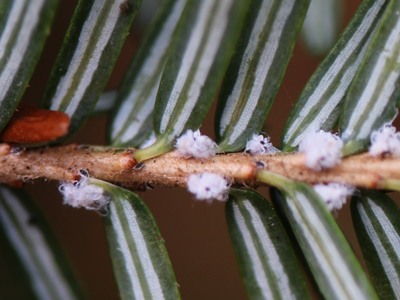Michigan DNR asks Winter Hikers to Identify Infected Hemlock Trees

MICHIGAN – The Michigan DNR needs help protecting the state’s more than 170 million hemlock trees.
An invasive species called, Wooly Adelgids, have been confirmed in infected eastern hemlock trees in five counties along Lake Michigan’s shoreline.
Winter hikers are key to the state department’s fight against the invasive species as Wooly Adelgid affected trees are easier to spot in cold temperatures.
The Woolly Adelgid is an invasive species native to Asia, and has been detected in Michigan. These small, aphid like insects suck sap from hemlock twigs and can ultimately cause tree death.
They can be identified by their round, white ovisacs found at the base of hemlock needles on the underside of branches.
Up close the ovisacs of Wooly Adelgid on infected hemlocks, can appear alone or in many clusters of what look like tiny cotton balls. Without treatment for Wooly Adelgid, hemlock trees can die within 4 to 10 years of becoming infected.
The Eastern Hemlock is a very popular tree found in front yards, parks, and typically found in moist soil along streams, rivers and Michigan’s coastal dunes. The dunes are primarily found along the Lower Peninsula’s shore with Lake Michigan, and the Upper Peninsula’s grand sable dunes, near Pictured Rocks National Lake Shore.
For resources to Identify the Eastern Hemlock and the Wooly Adelgid Click Here
